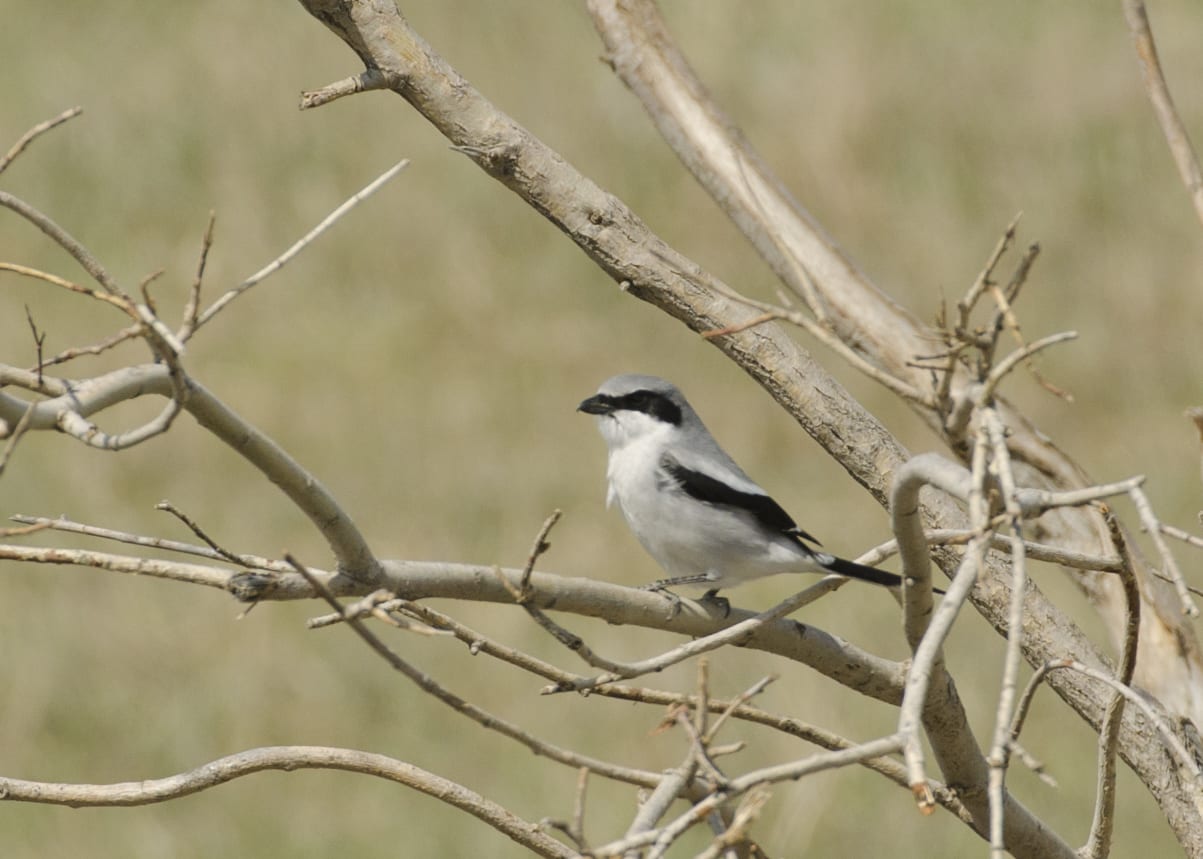Anyone that has seen Alfred Hitchcock's “The Birds†should have a healthy fear of crows. Even to someone who has never enjoyed the glorious spectacle of crows pecking people's eyes out in black and white, crows are unsettling. They are a large menacing black bird with a blood-curdling caw; add the fact that a group of them is called a “Murder†and they’re perfect for a starring role in a horror film.
The truth, which is not nearly as gory, is that crows rarely attack unprovoked and, when they do, people don't lose eyeballs. Outside of Hollywood, however, there are real bird species that will never terrify any theater audiences, but are more vicious than crows even without movie magic. Case in point: the Shrike.

The Shrike is a perfect example of when you shouldn't judge a bird by its feathers. At first glance it is hard to imagine that a cute little Shrike is actually a highly efficient bird of prey. They lack the talons, size, or speed of a raptor, but that never hindered their rise on the food chain. With the delicate feet of a perching bird, a Shrike should never be able to capture prey, but you will not find Shrikes eating berries and nuts like similar sized counterparts. In fact usually you will find Shrikes eating their similar sized counterparts.
With a little ingenuity and a whole lot of savagery Shrikes are able to live off a diet consisting of insects, reptiles, small mammals, and other birds.Shrikes have a sharp curved raptor's beak, which allows them to sever the neck of most prey, but whenever they catch something too large to kill quickly they will impale them on cactus spines, fence posts, thorns, or barbed wire fences in their surrounding territory. This impaling behavior is what separates Shrikes from all other songbirds and what earned them the title of “Butcher-Birdâ€.
The butchery surrounding a Shrike's territory is not just the dinner's leftovers swaying in the wind. Male Shrikes, which do most of the skewering, adorn their territories with staked carcasses in order to attract females. They will even leave much of the prey uneaten so that their territory and thus hunting prowess seems more impressive.
During mating season a male Shrike's territory is a splendor of gore and feathers as he hopes to attract a female. In order to test a theory that higher body counts attract more females, Biologist Reuven Yosef, transferred impaled prey to Shrikes whose displays were lacking and found that it did in fact affect the number of females they attracted but also the number of eggs those females laid.
There are two main species North America, the Loggerhead and Northern Shrike. The Loggerhead is found primarily in the south, we have them in Georgia. To the untrained eye a Shrike might be mistaken for a mocking bird, which is why if you'd like to find one the best bet is to look for the territory rather than the bird itself.
A Shrike's territory is hard to miss, just look for the gory spectacle of carrion swaying off the branches of a tree or fence, which will be in areas of open grassland near fence lines or bushes where they can cache prey. Unfortunately these territories are becoming more and more difficult to find, especially territories of the Eastern Loggerhead and the San Clemente Island shrike which are both critically endangered species. The sharp declines in population have been attributed to modern agricultural practices, pesticides, and climate change.
Even though Shrikes are arguably more vicious than any bird terrorizing townspeople in “The Birds†I don't fear them because I'm much too big for them to get me, but I do fear that one day our world be too big for these magnificently gory and unique little birds.
About the Author
 |
Theo Fountain is a senior biomedical engineering major at the University of Georgia, and is currently researching the effects of backyard poultry on the transmission of Newcastle Disease. His dream job was to be a MythBuster, but settled with engineering instead. Theo is also a Georgia cheerleader who you can catch defying the laws of physics on the sidelines of football games. More from Theo Fountain. |
About the Author
- athenssciencecafehttps://athensscienceobserver.com/author/athenssciencecafe/April 17, 2020
- athenssciencecafehttps://athensscienceobserver.com/author/athenssciencecafe/April 12, 2020
- athenssciencecafehttps://athensscienceobserver.com/author/athenssciencecafe/April 3, 2020
- athenssciencecafehttps://athensscienceobserver.com/author/athenssciencecafe/March 30, 2020







